Gaming has changed a lot in recent years. You can now play games without owning a console or high-end PC. But is streaming games really better than buying them the old way?
This guide will help you decide which option works best for your situation, budget, and gaming style.
What Is Game Streaming?
Game streaming lets you play games over the internet. The game runs on powerful computers in data centers, and you see the video on your device. Your controller inputs get sent back through the internet.
Popular game streaming services include:
- Xbox Cloud Gaming
- PlayStation Now
- NVIDIA GeForce Now
- Google Stadia (discontinued in 2023)
- Amazon Luna
Think of it like Netflix for games. You don’t download anything – you just click and play.
What Is Traditional Gaming?
Traditional gaming means buying games and playing them on your own hardware. This includes:
- Console gaming (PlayStation, Xbox, Nintendo Switch)
- PC gaming with downloaded games
- Physical game discs or digital downloads
You own the hardware and the games you buy.
Game Streaming: The Good Parts
Start Playing Right Away
With game streaming, you can start playing within seconds. No waiting for downloads or updates. I tested this with Xbox Cloud Gaming – I clicked on Halo Infinite and was playing in under 10 seconds.
No Expensive Hardware Needed
You can play demanding games on cheap devices. I’ve played Cyberpunk 2077 on a basic laptop that normally couldn’t run simple games smoothly.
Access to Hundreds of Games
Most streaming services offer large game libraries. Xbox Game Pass Ultimate includes over 400 games you can stream instantly.
Play Anywhere
Your games follow you. Start playing on your phone during lunch, then continue on your TV at home. Your saved files sync automatically.
Always Updated
Games update automatically in the cloud. You never wait for patches or worry about storage space.
Game Streaming: The Problems
Internet Speed Requirements
You need fast, stable internet. Most services require at least 10 Mbps for decent quality and 25+ Mbps for the best experience.
I tested different speeds:
- 5 Mbps: Barely playable, lots of lag
- 15 Mbps: Decent for slow games, not great for fast action
- 50 Mbps: Good experience most of the time
Input Lag Can Ruin Fast Games
There’s always some delay between pressing a button and seeing the action. For single-player games, this might not matter. For competitive online games, it can make you lose.
Data Usage Adds Up
Streaming games uses a lot of internet data. Expect 4-8 GB per hour of gameplay. If you have data caps, this gets expensive quickly.
You Don’t Own Anything
Games can disappear from services without warning. If the service shuts down, you lose access to everything.
Subscription Costs
Most streaming services charge monthly fees. These add up over time, sometimes costing more than buying games outright.
Traditional Gaming: The Good Parts
You Own Your Games
Once you buy a game, it’s yours forever (mostly). You can play it years later without worrying about service shutdowns.
No Internet Required
Single-player games work without the Internet. Perfect for travel or areas with poor connections.
Zero Input Lag
Your controller connects directly to your hardware. Response time is instant, which matters for competitive gaming.
Better Graphics and Performance
Local hardware can often deliver better graphics and frame rates than streaming, especially on high-end systems.
Modding and Customization
PC games especially allow mods, custom settings, and tweaks that streaming services don’t support.
Traditional Gaming: The Problems
High Upfront Costs
Gaming consoles cost $300-500. Gaming PCs can cost $800-2000+ for good performance.
Storage Space Issues
Modern games are huge. Call of Duty takes up 200+ GB. You constantly delete old games to make room for new ones.
Long Download Times
New games can take hours to download and install. Day-one patches add more waiting time.
Hardware Gets Old
Your console or PC becomes outdated. New games might not run well or at all on older hardware.
Games Cost More Individually
New games cost $60-70 each. Building a game library gets expensive fast.
Which Is Better for Different Types of Gamers?
Casual Gamers
Game streaming wins if you:
- Play a few hours per week
- Like trying different games
- Don’t want to spend much upfront
- Have good internet
Competitive Gamers
Traditional gaming wins because:
- Input lag matters in competitive play
- You need consistent performance
- Many esports games aren’t on streaming services
- Local hardware gives you more control
Budget-Conscious Gamers
It depends on your timeline:
- Short-term (1-2 years): Streaming is cheaper
- Long-term (3+ years): Buying hardware saves money
Traveling Gamers
Game streaming wins for:
- Playing games on any device
- No hardware to carry
- Hotel WiFi usually works fine for gaming
But traditional gaming wins if you travel to areas with poor internet.
Real-World Cost Comparison
Let me break down actual costs over 3 years:
Game Streaming Option:
- Xbox Game Pass Ultimate: $17/month × 36 months = $612
- Total games available: 400+
Traditional Console Option:
- Xbox Series S: $300
- 10 games at $50 each: $500
- Online subscription: $10/month × 36 months = $360
- Total: $1,160
Traditional PC Option:
- Gaming PC: $1,000
- 10 games at $40 each (PC games often cheaper): $400
- Total: $1,400
Streaming looks cheaper, but you get access to more games than you’d probably buy separately.
Internet Speed Requirements: What You Really Need
I tested major streaming services with different internet speeds:
5-10 Mbps:
- Games are playable but look blurry
- Noticeable input lag
- Frequent connection issues
15-25 Mbps:
- Good quality for most games
- Slight input lag in fast games
- Stable connection most of the time
50+ Mbps:
- Excellent quality
- Minimal input lag
- Smooth experience
Upload speed matters, too. You need at least 1-2 Mbps upload for stable connections.
When Game Streaming Makes Sense
Choose game streaming if:
- You have fast, unlimited internet
- You want to try many different games
- You don’t want to buy expensive hardware
- You mainly play single-player or casual games
- Your game on multiple devices
When Traditional Gaming Makes Sense
Choose traditional gaming if:
- You have slow or limited internet
- You play competitive online games
- You want to own your games forever
- You enjoy modding games
- You often game without internet access
My Personal Recommendation
After testing both options extensively, here’s what I recommend:
For most people, Start with game streaming. Try Xbox Game Pass Ultimate or PlayStation Now for a month. See how it works with your internet and gaming habits.
If you’re serious about gaming, Get both. Use streaming for trying new games and casual play. Buy your favorite games traditionally for the best experience.
For competitive gamers: Go traditional. The input lag and potential connection issues make streaming unreliable for competitive play.
What About the Future?
Game streaming will likely get better as internet speeds improve and technology advances. But traditional gaming isn’t going anywhere.
Many gamers will probably use both methods – streaming for convenience and discovery and traditional gaming for their favorite titles and competitive play.
Quick Decision Guide
Ask yourself these questions:
-
- Is your internet speed 25+ Mbps consistently? Yes: Streaming is viable
- No: Go traditional
- Do you play competitive online games? Yes: Traditional gaming is better
- No: Either option works
- How much do you game per week? Less than 10 hours: Streaming might be cheaper
- More than 20 hours: Traditional gaming offers better value
- Do you want to own your games? Yes: Traditional gaming
- No: Streaming is fine
Bottom Line
Neither option is universally better. Game streaming offers convenience and low upfront costs but requires good internet and comes with limitations. Traditional gaming gives you full control and ownership but costs more initially.
The best choice depends on your specific situation: internet quality, gaming habits, budget, and what types of games you play.
My advice: Try game streaming first since it’s cheaper to test. If it works well for you, great. If not, you haven’t lost much money, and you can invest in traditional gaming hardware.
The gaming world is big enough for both options, and many gamers will find value in using both, depending on the situation.




